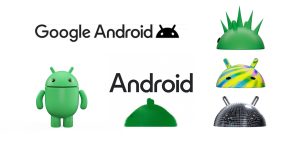
This week, Moment announced that it would be pulling the plug on its Android app, “Pro Camera.” Why? Because of Android’s fragmentation. In the time since, I’ve seen countless people complain that Moment just isn’t trying hard enough or that it can’t be that complicated.
Instead of just telling you that I think they’re justified in this decision, I think it’s easier to just show you how complicated the situation has become for Moment Pro Camera on Android.
First things first, what is the Moment Pro Camera app? The short version is that it’s an app designed to give you more control over your smartphone’s camera. It enables granular controls for focus, shutter speed, ISO, and more. It can even capture RAW images and has special modes to enhance the shots taken with Moment’s lenses that attach directly to cases for select Android smartphones. You can get a solid overview of what the app does here.
It’s a great app, but now it’s dead.
The most common thing I’ve heard since this news broke is users asking why Moment doesn’t just drop wide Android support and only provide support for the phones its cases and lenses support. I asked Marc Barros, the CEO about this directly and his answer actually caught me a little off guard — Moment already does that. As it stands now, Moment only actively supports around 20 Android smartphones including select Samsung, Pixel, and OnePlus devices.
Ok, so what’s the barrier here? After all, it can’t possibly be that difficult to support these Android phones, right? In the immortal words of my favorite Spongebob narrator — Right? Haha, wrong.
Moment shared a spreadsheet with me to show every feature that its Pro Camera supports on Android from 24fps video to HDR+ to just supporting all of the cameras on the device. In that spreadsheet, the variance between these different smartphones and what Moment has been able to support is simply astounding.

As an example, let’s look at Google’s Pixel lineup. This should be the easiest option, right? After all, Google controls Android itself and even gives developers easier access through the Pixel Visual Core, something Moment Pro supports.
Out of the four generations listed in the app, the Pixel 2 and Pixel 2 XL are the best supported. Move forward a generation, though, and Moment can no longer access 24fps video in any resolution and loses access to a ton of other options for shooting video. There’s even differences between Pixel 3 and Pixel 3 XL, the larger of the two missing some video shooting options.
Another notable example is that, on the Pixel 4, support for “HDR+ Enhanced” is lost, presumably due to the switch from Pixel Visual Core to Pixel Neural Core.

Green = Supported by Moment Pro – Yellow = Supported by device, but not app – Red = Not supported by device
The situation remains the same for other supported devices. Samsung, for example, consistently restricts Moment Pro from accessing anything higher than 30fps video, even cutting off 4K entirely for the Galaxy S8 and Note 8. This is all despite Samsung’s own camera app supporting more options.

Why is this so bad? I’m not a developer, so I can’t fully explain that to you, but I did talk to a few people who have more insight. CStark27, one of the developers behind GCam ports on other devices gave me some interesting details about this. He explained that, yes, every device can support varying levels of photo and video features. Vendors can opt to restrict select camera APIs and features on that specific device, something the vendors themselves can get around by “whitelisting” their own camera app.
Pure “stock” Android wouldn’t have this problem, but the changes made by vendors such as Samsung, OnePlus, and even Google itself break a lot of these features.
There’s also a handy app that can show this to you on your own Android smartphone. Camera2 API Probe will show what the device can support versus what third-party apps can access. GCam ports, as a quick example, require different installations for different devices for precisely this reason.
The short answer to all of this though, is that access to the camera on Android is not as simple as you would assume, especially for features as demanding as a Pro Camera app requires.

Is there a way for Moment to develop workarounds to get these features working? Technically, yes, but it’s a very complicated process that a paid app distributed through the Google Play Store wouldn’t want to be involved in. Moment’s team of developers is not large, so maintaining so many different feature sets across so many devices has to be incredibly frustrating. Making things worse, most likely, is the constant fear that the next Android update might break something else that they simply can’t fix.
You might be angry that Moment Pro Camera is dead on Android, and that anger is completely valid! But, after seeing behind the scenes I think most people can agree that Moment’s decision was at least partially justified.
Could this change in the future? Absolutely! Google could start more heavily regulating APIs such as this and the updated CameraX API might be able to make things better, though it could, at the same time, make things worse. Either way, any improvement feels unlikely at this point in time. Google just doesn’t have a track record of being the “bad guy” who forces its partner’s hands and I don’t think we can count on that changing anytime soon.
So RIP Moment Pro. You were loved, you’ll be missed, but at least your death is giving us a lot of insight on the fragmentation of Android.
Thanks Max, CStark29, UltraM8
FTC: We use income earning auto affiliate links. More.



Comments